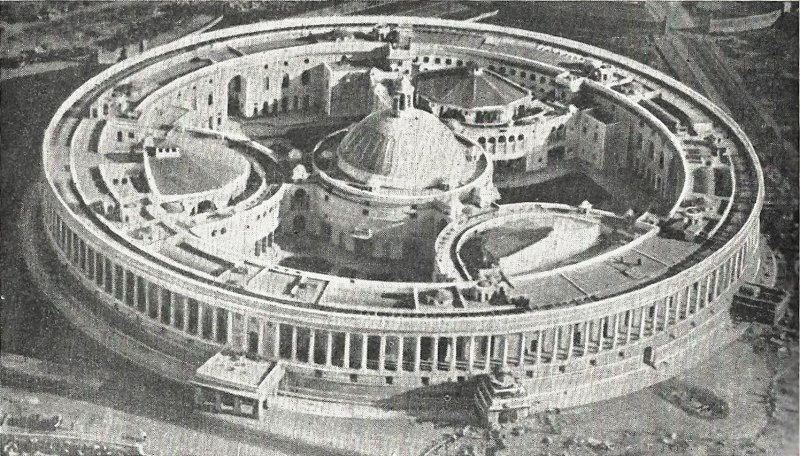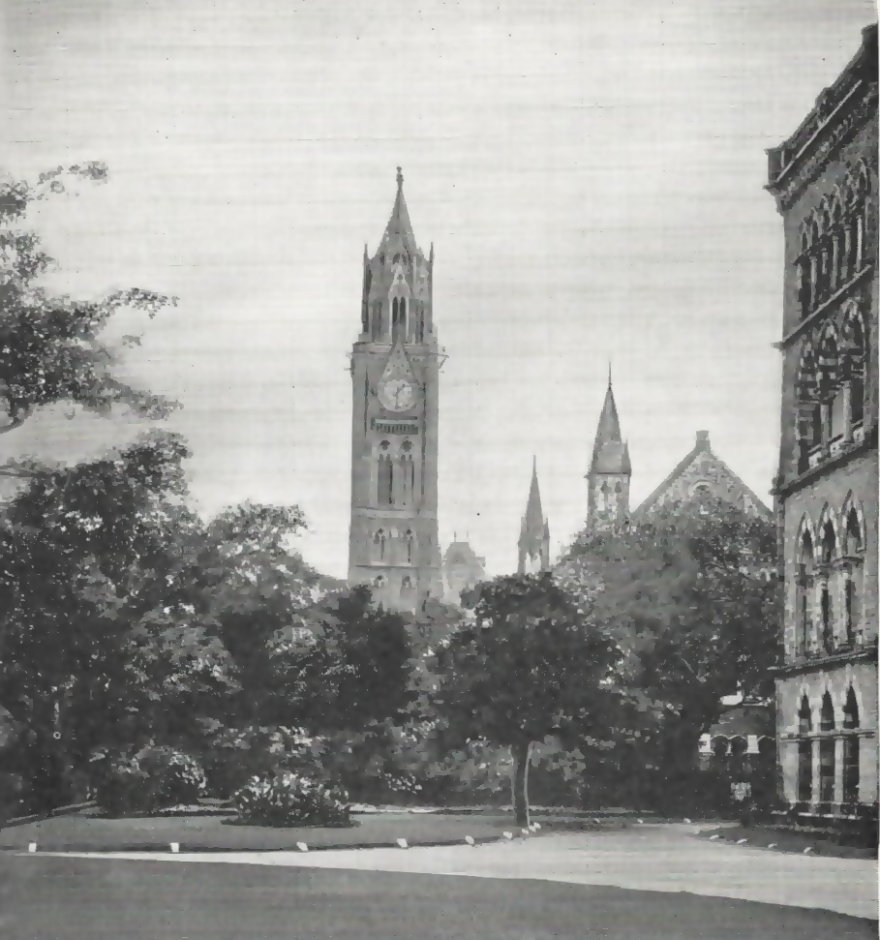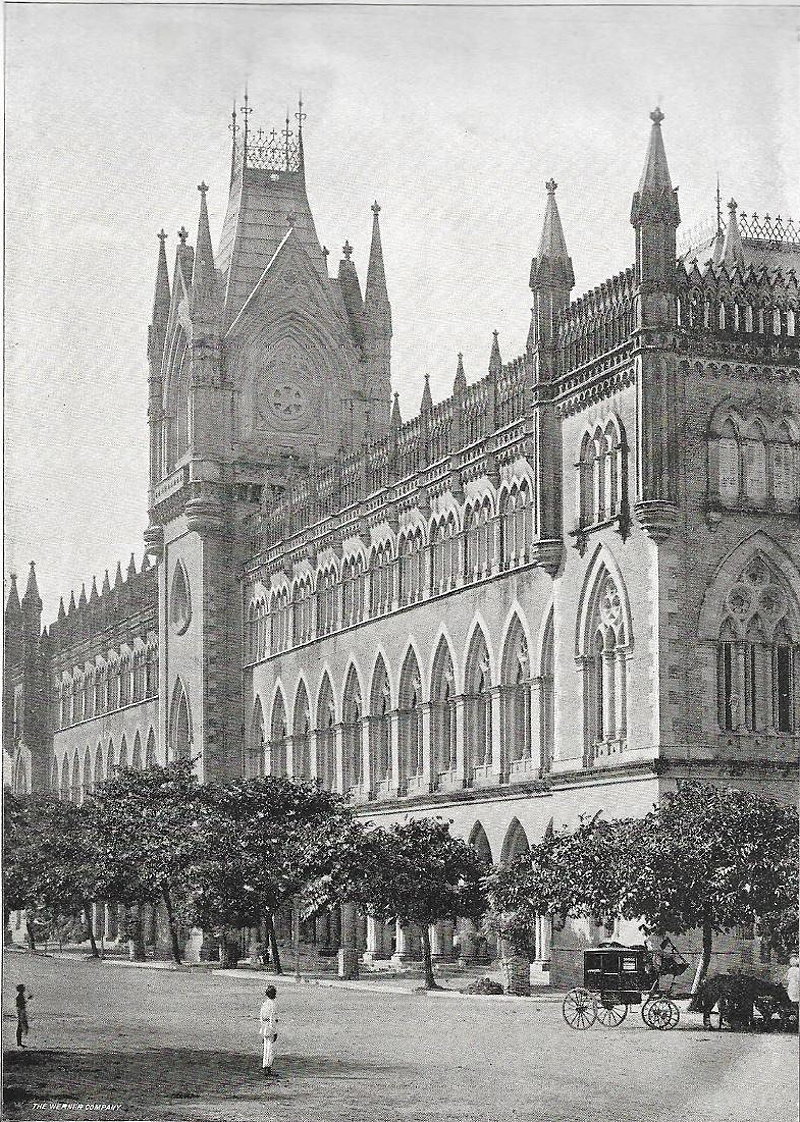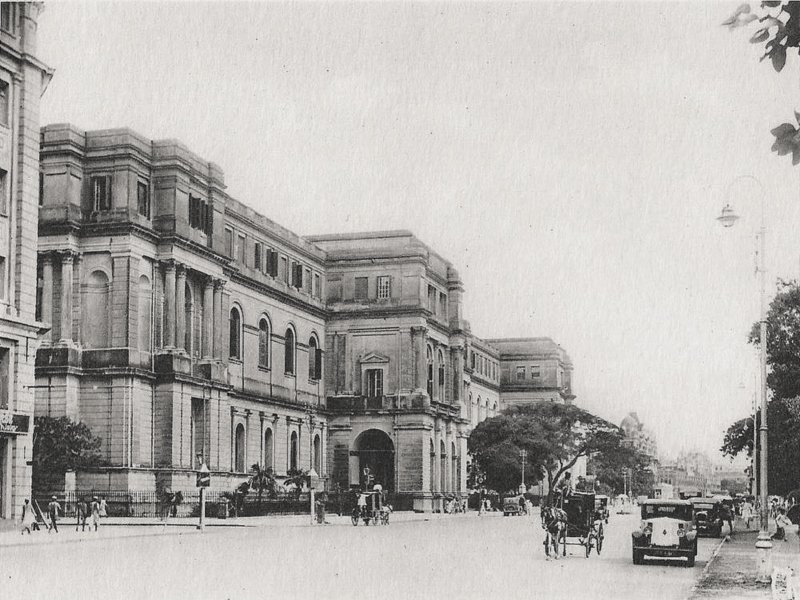Comments on Episode One of Portillo’s Empire Journey
R P Fernando, London, UK email: rfernando@live.co.uk
In the recent series Portillo’s Empire Journey Michael Portillo takes on the task of describing how a small island on the edge of Western Europe ruled the biggest empire in the world. The first programme was devoted to British India. Unfortunately, in the programme locations exemplifying British greed, decadence and oppression were shown in great detail and positive aspects were only mentioned, in passing, in the last two minutes. This paper is intended to give a more thorough account of the lasting legacy of British India. I shall concentrate on education, healthcare, justice, parliamentary democracy, railways and archaeological research.
Education
In the programme the word education was mentioned once or twice, in passing, without giving any details. Little is known about education in India before the British period. There are practically no documents or records. The sons of the wealthy were well-educated by private tutors. The rest were given a rudimentary education in reading, writing and arithmetic in schools attached to temples and mosques. Western schools, in which hundreds of pupils were are taught a full curriculum encompassing arts and sciences, by trained teachers, were introduced by the British. The first modern school, the Calcutta Madrassah was founded by Warren Hastings in 1780. This was followed by the Benares Sanskrit College established by Jonathan Duncan in 1791 and the Hindu College by the joint efforts of Chief Justice Hyde East and David Hare in 1816 in Calcutta. A more formal role in education, following a campaign by William Wilberforce and others, was given to the East India Company by the Charter Act of 1813 to ‘spend a sum of not less than 1 lac of rupees in each year and set apart and applied to the improvement of literature and the encouragement of the learned natives of India and for the introduction and promotion of science among the inhabitants of the British territories in India’. This laid the foundation of a modern education system and for the first time an Indian authority had a legal duty educate the people.
The next milestone was that Macaulay’s Minute in 1835 that the object of educational policy should be the spread of Western learning through the medium of the English language. This led to India having a national language, students able to use English text books and attend British universities and to enter all government departments. The next major development was Sir Charles Wood’s despatch of 1854. This created the Education Department, founded universities and established a network of graded schools all over India. The first thee universities at Calcutta, Madras and Bombay were opened in 1857. For the first time, records were kept of the number of schools and pupils. The number of schools and colleges belonging to, maintained or aided by the government increased from the original 3 to 8058 by 1858 teaching 148,494 pupils. The total number of educational institutions increased further to 196,919 by 1918 teaching 7,948,068 pupils. At independence there were about 170,000 primary schools teaching 13m pupils and 14,000 secondary schools teaching 3m pupils. The first university was founded in Calcutta in 1854 and by 1902 there were an additional four at Madras, Bombay, Allahabad and Lahore. At independence India had 19 universities with additional ones in Pakistan. India alone had 241,794 students at university at independence. There were also over 350 Arts and professional colleges.
The lives of countless Indians were transformed by the introduction of modern education as described by Idris Ahmad, a Head Master, in his book Britain in India in 1923: have we benefitted? (1923): ‘Of all the steps taken by the British Government for the benefit of Indians, the policy which it adopted of public instruction as a state duty, to all its subjects, is the greatest advantage it conferred on our country. None of the preceding Governments of India ever undertook or attempted the task of educating the whole Indian people, of whatever race, caste or creed. It was the British which for the first time recognised the education of all classes as the most important duty of the State, and undertook to teach Indians the English language, with the view of rendering Western arts and sciences accessible to them, so that Indians should not lag behind other advanced nations of the world. In the course of 30 years between 1857 and 1887, five universities were established at Calcutta, Bombay, Madras, Lahore and Allahabad; and schools and colleges were opened in all the important towns and villages. In ancient times education was confined to certain privileged castes. The depressed classes or the untouchables were absolutely debarred from all sorts of education. The blessing of knowledge was denied to them. This invidious distinction is generally observed even to this day, and in private schools, managers still object to the admission of low caste children in their schools and usually do not admit them. It was reserved for the British government to ignore all racial and social distinctions and to open the doors of public schools to the boys and girls all classes of the Indian people irrespective of race’.
It is disappointing that Mr Portillo did not show schools such as the Benares Sanskrit College and universities such as the Bombay University.
Bombay University, The library and tower
Medical Services
This subject was not mentioned at all in the programme. The first hospital the British established was the Madras General Hospital in 1679. The Presidency General Hospital was established in Calcutta in 1796. Towards the end of the 18th century a hospital was provided for Indians in Calcutta. It had 218 in-patients and 4443 out-patients in 1803.To fulfil the need for health professionals, the East India Company founded the Calcutta Medical College in 1835, the first institute of Western medicine in Asia. An early historical event was the first dissection of the human body (in modern times) by a Hindu, Pandit Madhusudan Gupta in January 1836. The event aroused so much enthusiasm that a salute of guns was fired from Fort William in honour of the occasion. In the next few years, medical colleges were opened in Madras and Bombay.
A network of hospitals was set up throughout India and in 1854 the government took on the responsibility of supplying medicines and instruments and set up store depots in several places. The total number of government hospitals and dispensaries was about 1200 in 1880 rising to 2500 in 1902 treating 7.4m and 22m patients respectively. The history of vaccination can be traced to 1802 when a Superintendent of vaccination was appointed in India. In 1880, an act was passed for the compulsory vaccination of children in municipalities and cantonments. The proportion vaccinated at birth was 19.9% in 1880 and 39.1% in 1902. Formal public health began with the appointment of Sanitary Commissioners in five provinces in 1880. For the first time, registers of births and deaths and causes of deaths, such as cholera, small pox, plague, fevers, dysentery etc. were recorded. In 1917, there were 3101 hospitals and dispensaries treating 35,830,499 patients in India. By 1937, there were over 35,000 qualified doctors working in 5891 hospitals and dispensaries.
Idris Ahmad in the 1923 book mentioned above also discussed the improvements in healthcare during the British period: ‘Before the Crown assumed the government in 1858, much had been done to provide medical institutions for the relief of Indians, but it is in the last half century that progress has been most remarkable. In 1857, there were 142 civil hospitals and dispensaries at which 671,000 people were treated during the year. There were in the year 1917 some 4,638 hospitals and dispensaries maintained or assisted by the State at which 44 million persons are annually treated, of which almost a million are treated as in-patients who are allowed free-board, lodging and medicines and who are nursed by hospital servants. There are besides 1000 private institutions, and about 900 special hospitals are maintained by the state for soldiers and the police, and by the railway companies for their servants. The number of Indian practitioners qualified in modern surgery and medicine is now more than twenty times as large as it was in 1857.The surgical work has been specially appreciated by the people and has their entire confidence, more than a million and a half operations are performed every year. One officer in the Punjab in a year did more than 1,700 operations for cataract, a common eye disease in India’.
Justice
In the programme, the word "justice" was mentioned once or twice in passing without giving any details. The Indian justice system is based on the British model. The British introduced the concepts of the Rule of Law, Independent Judiciary and Equality under Law. In this section I will frequently quote the book English Law in India by A C Banerjee who was a professor in Indian History in Calcutta University and whose academic career spanned from the 1930s to the 80s. Before the British, all India’s rulers were despots, some good and some bad. It is with the advent of the British Empire that the notion that rulers had to govern within constraints specified by a set of laws and, if they did not, people could take them to an independent court, first appeared.
The Rule of Law was introduced in India by the Regulating Act of 1773. Professor Banerjee discusses the profound implications of this: ‘The Regulating Act of 1773 created a pattern of collective government (the Governor-General and Council) resembling the English cabinet system and introduced the English system of administration of justice by a King’s Court ie. the Supreme Court. This was the beginning of a system of checks and balances which was developed by later Parliamentary legislation and also by the growth of political and administrative conventions. The political genius of the English people, their long system of a balanced system of government, and their deep-rooted confidence in the Judiciary, would not tolerate the establishment of a government in India which was based on the Mughal precedent. Parliament tried to reconcile the supreme need to maintain England’s hold on India with the organization of political, administrative, judicial and legislative agencies which conformed as far as possible with the lessons of English history. Here lies the principle of Rule of Law which is among the most precious legacies of England to India’.
Another aspect of British justice was the equality of justice and this has also been addressed by Professor Banerjee: ‘Though not directly connected with the question of social reform, it is necessary to mention in this connection the principle of equality before law which is one of the greatest gifts of English law to India. This principle was entirely unknown to Hindu Law and Muslim Law. Under Hindu Law the Brahmins enjoyed privileged treatment. Asoka is said to have offended them by introducing dandasamata (equality of punishment) and vyavahara-samata (equality of law). Under Muslim law the theological classes – the pirs and the ulema – were privileged persons. The idea that the same law applied to all persons irrespective of religion, caste or class was unknown in ancient or medieval India. It was introduced for the first time through the introduction of English law which made no distinction between Brahmins and Sudras, Hindus and Muslims’.
The High Court building in Calcutta (Kolkata)
Professor Banerjee’s overall summary was: ‘Except in the case of the personal laws of the Muslims the entire legal system of India is based on English Law Courts with well-defined jurisdiction, assisted by highly sophisticated lawyers, administer laws and interpret them not infrequently in the light of the present laws of England. Finally, the Constitution, which upholds the democratic structure of the State, is an imported product, and the English ingredients constitute its largest portion. The higher courts often appeal to English precedents in interpreting its provisions. The democratic values which we hold so dear cannot be traced even remotely to Hindu Law or Muslim Law. While retreating from India, England has left behind a vast and enduring monument in a legal system which embodies the egalitarian and humanitarian values evolved during the nineteenth century’.
It is disappointing that the programme did not show courts such as the Calcutta High Court, above, where judges and lawyers in wigs and gowns administer justice.
Parliamentary Democracy
Britain’s role in introducing parliamentary democracy was not mentioned at all in the programme. Mr Portillo did mention that self-government was promised during World War 1 but added that this promise was not kept. This is untrue. The promise relates to the declaration by Edwin Montagu, Secretary of State for India, in October 1917, that responsible government ie by Indians was the goal of British policy. Far from breaking the promise, considerable steps were taken to set India on the path to self-government. Montagu came to India and discussed with British and Indian officials and judges and political leaders, such as Gandhi, and he and the Viceroy, Lord Chelmsford, published the Montagu-Chelmsford reforms in 1918 on how democracy could work in a complex country like India. The report advocated the need ‘to emancipate the local government from central control; and to advance, by successive stages, in the direction of conferring responsible government on the provinces’. They proposed a central government in Delhi with two chambers and provincial governments in the provinces. They specified which areas should be devolved. The key principles of responsible government, self-governance and the federal structure grew out of these reforms. It is not surprising that some refer to the Montagu-Chelmsford Reforms as India’s Magna Carta.

The New Delhi Parliament Building, designed by Edwin Lutyens
These reforms were followed by the Government of India Act (1919). This led to India’s first national elections in 1920. The subjects most affecting the lives of Indians in the provinces, such as education, health and agriculture, were transferred to Indian ministers. British Governors still had the power of vetoing legislation but for the first time in India’s history there were Indian ministers responsible to elected Indian legislators. Furthermore, some British civil servants were now working under Indian ministers. In addition to these reforms, Britain showed its gratitude to India by admitting Indians to the War Cabinet and to the Imperial Conference, which was the body including all the dominions. Mr S P Sinha was elevated to the peerage and appointed Under-Secretary of State for India. Indians were allowed to be officers in the army. Britain agreed to India to have its own seat at the League of Nations. A department was formed, the Reforms department, whose role was to facilitate the transfer of power. A process was started, Indianisation, to increase the proportions of Indians in all government departments. A new parliament building was built and opened in 1927 for the central legislature and the building is still the home of the Indian parliament.
The Government of India Act (1919) specified that situation would be reviewed in 10 years and that was done by the Simon Commission. Following their report and the Round Table Conferences in London, extensive powers were transferred by the Government of India Act (1935). Further powers were transferred to Indian Ministers in the provinces. The transferred powers included health, education, public order, agriculture, justice and public debt. Essentially, the internal governance of India was transferred to Indians with the Viceroy, at the centre, retaining foreign affairs, defence, communications and coins and currency. The 1935 Act contained the provisions to make India an independent dominion and, hence, India retained this Act as its constitution for 3 years after independence and Pakistan retained it for 9 years after independence. The new constitution of India, drawn up by Sir B N Rau, which is the one still in use, is largely based on the 1935 Act. Indian MPs today sit in a parliament building built by the British and function with the terms of a constitution which is also derived from British legislation.
The foundations of Indian parliamentary democracy were laid by the British and the benefits to India have been noted by V P Menon, a senior Indian civil servant, in his book Transfer of Power: ‘From 1765 when the East India Company took over the collection of revenues of Bengal, Bihar and Orissa, the British had gradually built up in India an administrative and political system hitherto unknown. They brought about the consolidation and unity of the country they created an efficient administrative organization on an all-India basis it was they who for the first time introduced the rule of law and they left to India that most precious heritage of all, a democratic form of government. As long as there is an India, Britain’s outstanding contributions to this country continue to abide’.
Such sentiments were completely absent in this programme.
Railways
The construction of the Indian railway system by the British was a monumental feat of engineering. Over 42,000 miles of railways were laid by independence, five times greater than that in China. The British also constructed 285,313 miles of paved roads. Mr Portillo has suggested that the railways were constructed mainly for the benefit of the British to transport their troops and goods. This is nonsense. Major rebellions happened in 1858, 1919 and in the 1940s.There were many decades of relative peace and there was no need for continuous troop transfers. Though the first line was to transfer goods to Bombay, very soon, passenger lines were constructed linking all the cities and towns. Magnificent stations were built for the passengers. People who had spent their entire lives within 10 miles of their birthplace could now commute 20 miles to work every day. They could work several hundred miles from their homes and come back regularly. They could visit religious sites anywhere in the country. There were 14m passengers in 1869 and 624m by 1929.The railways also employed 1m employees. About 90% of the staff and passengers were Indians. The Indian railways were the first major employer which was not caste based. It provided homes and hospitals for their staff. They were the arteries of the country and helped to unify the nation.
Idris Ahmad described the benefits of the railways in 1923: ‘The most striking of England’s achievements in India are the railways. Sixty years ago there were no railways in India, poor men travelled on foot, and rested under trees by night. The rich rode on ponies or were carried in bullock carts, horse carts or in palanquins. Travellers were exposed to fatigue, to the weather, to robbers, to sickness and sometimes had to lie down and die alone. More time and money was spent on even short journeys. The routes were unsafe and infested with robbers and plunderers, who plundered the travellers and even murdered them. It was risky and sometimes fatal to travel alone and so intending travellers had to wait long till they were able to caravan and travel in large numbers. This state of affairs is now a thing of the past. Rivers, even like the Ganges and Jumna have been bridged and men can very easily traverse by rail distances of hundreds of miles in a few hours, perfectly secure without incurring any risk.
By railways the people of this great continent have been drawn together. The country has been opened up, knowledge and enlightenment have been spread. The awakening of India to some sense of national feeling and brotherhood is mostly due to roads and railways’.
Such sentiments were not mentioned in the programme.
Indian Heritage and the Restoration of Buddhism
One aspect of British India that is rarely mentioned is Britain’s role in the study of Indian heritage. The first systematic and academic study of many Eastern cultures followed the founding of the Asiatic Society of Bengal by Sir William Jones in 1784. For the first time there was an institutional focus for the study of Asian antiquities. Other early scholars included Sir Charles Wilkins, Henry Colebrook and Horace Wilson. Wilkins and Colebrook founded the Royal Asiatic Society in Britain in 1823. The journals of the Royal Asiatic Society and the Asiatic Society of Bengal enabled the regular publication of learned papers on all aspects of Asian culture. Before the arrival of the British, most of India’s ancient sites, including the Taj Mahal, were in a state of disrepair, under metres of debris or overrun by jungle. The Archaeological Survey of India, founded in 1861, and led by Sir Alexander Cunningham in the 19th century and Sir John Marshall in the 20th century, rediscovered, restored and studied India’s ancient sites. About a hundred museums were opened in India, Sri Lanka and Burma, the first being the Calcutta Museum in 1875.
Related to this were Britain’s immense services to Buddhism. The Buddha died in the 6th century BC and Buddhism flourished in India especially following the reign of Emperor Ashoka in the 3rd Century BC. However, following onslaughts from Hinduism and Islam, the religion disappeared from the land of its birth by the 12th century AD. All the main sites, Lumbini, Buddhagaya, Sarnath and Kushinagara and the minor sites had disappeared from the face of the earth. The name of Ashoka was unknown in India. British archaeologists and Orientalists rediscovered and restored these sites. The British belief in the principles of freedom of religion and the rights of minorities enabled Buddhism to return to the land of its birth. India regained its Buddhist heritage. Buddhist pilgrims were able to visit their holy sites after an absence of nearly 700 years. The British role in this regard was an act of munificence without parallel and not mentioned in this programme.
The Indian Museum, Calcutta (Kolkata)
An overall assessment of British rule was given by the journalist Nihal Saint Singh in his book Progressive British India in 1914: ‘As a result of British activity, today peace reigns supreme over the Peninsula, and has prevailed for more than half a century. ...To guarantee the continuance of this tranquillity strong and efficient army and police systems have been established; the country has been cut up into administrative divisions under a central government, demarcations have been made between the civil and military departments; the levying and collection of taxes have been systemized; the laws of the land have been codified and a judiciary established to administer them; and all parts of the country have been linked up with good roads, railways, post, telegraph, and in some localities, telephones. As a result of the settled state of affairs, the intellectual, industrial, social, moral, religious and political reconstruction of India has been proceeding apace, and the people have made noteworthy progress in each of these departments of life’.
It is apparent that Mr Portillo’s programme was woefully inadequate and did not give the viewer a true perspective of Britain’s legacy in India.


